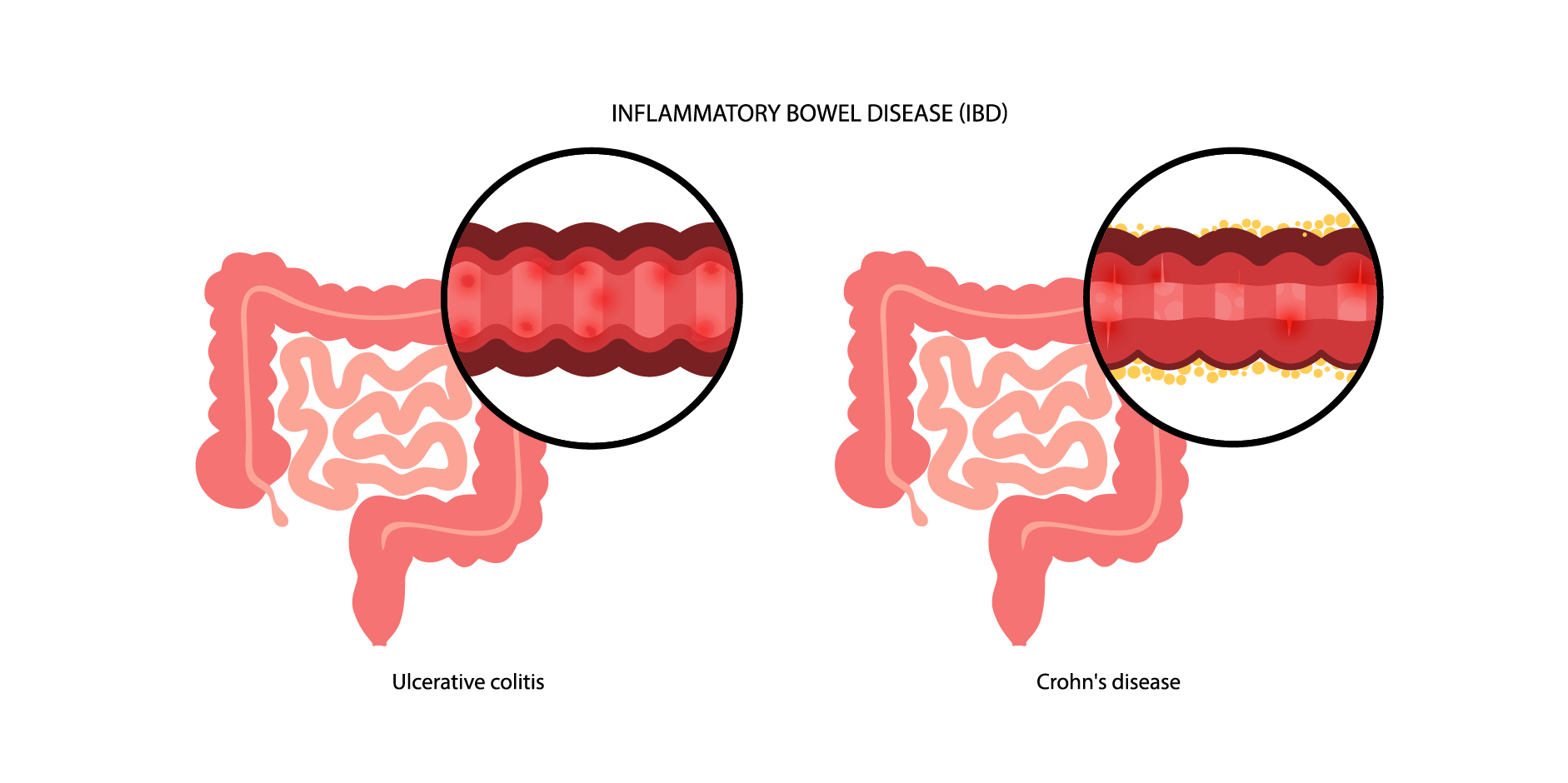Nội dung của trang này:
Nội dung của trang này:
Giới thiệu
Inflammatory bowel disease (IBD) consists of ulcerative colitis (UC) and
Crohn’s disease (CD). Ulcerative colitis is a diffuse mucosal inflammation
limited to the colon. Crohn’s disease is a patchy, transmural inflammation that
can occur in any part of the gastrointestinal (GI) tract but the ileum and
colon are the most frequently affected sites.
 Inflammatory Bowel Disease_Disease Background
Inflammatory Bowel Disease_Disease BackgroundDịch tễ học
Inflammatory bowel disease affects approximately 7 million individuals
globally. The prevalence of ulcerative colitis is estimated at 100 to 200 per
100,000 with an annual incidence of 10 to 20 per 100,000. The prevalence of
Crohn’s disease is estimated at 50 to 100 per 100,000 with an annual incidence
of 5 to 10 per 100,000. The age of onset of inflammatory bowel disease is
between 15 to 30 years. There is a higher incidence of adult-onset Crohn’s
disease in females, while the incidence of ulcerative colitis is higher in
males.
The prevalence and incidence of inflammatory bowel disease are lower in
Asia and the Middle East compared to North America. However, inflammatory bowel
disease has an increasing incidence around Asia because of rapid
industrialization. The incidence of ulcerative colitis in East Asian countries
ranges from 0.95 to 12.2 (per 100,000 persons-years), while the incidence of Crohn’s
disease in this region was as high as 2.42 (per 100,000 persons-years). A
unique Crohn’s disease phenotype with male predominance and high rates of
perianal fistula was identified in the Asian population.
Sinh lý bệnh
Inflammatory bowel disease involves complex environmental, epithelial, genetic, immunologic and microbial factors. This occurs in genetically susceptible individuals mediated by an innate and adaptive immune response dysfunction against intestinal microorganisms. Environmental factors directly affect the gut or mediate their effects through the intestinal microbiota and play a role by transferring their disease-promoting potential into pathophysiological pathways with the intestinal microbiota as mediator. Microbial and direct environmental factors affect epigenetic signatures, intestinal epithelial cells and the innate immune system causing repeated flares at the same GI segment even after years of remission and after intermediate complete mucosal healing. Environmental factors, intestinal microbiota and food antigens can cause a leaky barrier or penetrate through a barrier leak into the deeper submucosal tissue layers of the gut and in genetically susceptible individuals, epigenetic modifications lead to innate and adaptive immune response dysregulation resulting in chronic intestinal inflammation. An excessive interleukin (IL)-17 production secreted by Th17 cells is involved in inflammatory bowel disease pathogenesis. Th17 cells play an important role in the induction and maintenance of chronic intestinal inflammation in patients with inflammatory bowel disease.
Yếu tố nguy cơ
Smoking is a risk factor for Crohn’s disease but has a protective factor for ulcerative colitis through an unknown mechanism. Prenatal exposure to smoke has been linked with inflammatory bowel disease risk in the offspring. Most people are diagnosed with inflammatory bowel disease between 15 and 35 years. Early-onset (occurring <40 years) disease is more aggressive and has a less favorable course, requiring more immunomodulators and surgical intervention compared with late-onset disease. Ulcerative colitis affects men and women equally, while Crohn’s disease is more frequent in women. Family history and recent episodes of infectious gastroenteritis are also important risk factors. Gastrointestinal bacterial infections such as Salmonella and Campylobacter species have been associated with inflammatory bowel disease. The use of non-selective NSAIDs may exacerbate ulcerative colitis. Appendectomy for proven appendicitis during childhood or adolescence is associated with reduced risk of ulcerative colitis in adulthood. Lifestyle factors such as stress, anxiety, and lack of physical activity have been implicated in IDB risk.
